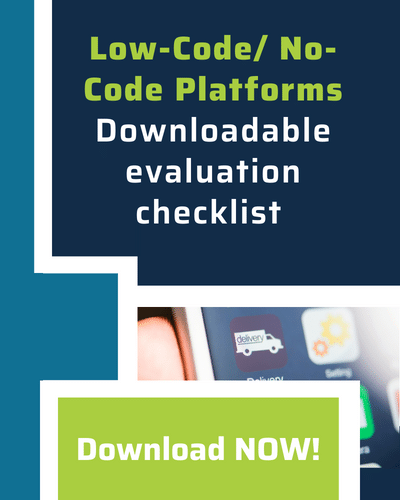Vaidya Aiyer, CEO and founder of Pillir, is a leader, innovator, entrepreneur, and technology geek. His 25 years of ERP and SAP experience has propelled his company’s vision of accelerating modernization and digital transformation. In this interview, he explains what his solution has to offer and what’s next for the company.
E-3 Magazine: What exactly does Pillir offer?
Vaidya Aiyer: Pillir provides enterprises with a complex ERP-centric IT environment with solutions to modernize, digitize, and transform their supply chains. It provides several ways for them to reach these business efficiencies and cost savings. Its low-code/no-code platform enables organizations to develop mission-critical apps twenty times faster than traditional methods, leveraging the power of SAP’s digital core from any device, with or without connectivity. Pillir’s platform is the only solution that automatically converts legacy custom business processes to modern, cloud-native, mobile-friendly applications. In addition, the company offers pre-built, customized supply-chain business applications optimized to ERP environments.
Pillir’s business applications enable enterprises, especially those with SAP environments, to modernize their legacy business processes and improve their supply chain efficiency regardless of their stage of digital transformation. Our applications are used for inventory, warehouse and purchase management, procurement tasks, warehouse transport tracking, and asset management, with minimal or no disruption to operations. Pillir is launching the “Goods Movement” suite of inventory and warehouse management applications for this purpose, including a special introductory promotion to help companies achieve digital transformation.
How does your solution work?
Aiyer: Our low-code/no-code platform is the only low-code, rapid application development platform that automatically transforms existing SAP business processes, business logic, and applications into their modern equivalents. Other low-code platforms require developers to rebuild applications from scratch; our platform mines and interprets a company’s existing business logic to jumpstart the application delivery process, reducing over 30 percent of the ERP total cost of ownership. The platform has an intuitive, block-based, low-code functionality. It enables SAP customers to create new processes and business functions, define workflows and logic, create UIs, build integrations, and automatically test their applications. An SAP-certified plugin automatically creates the interface (no need to create OData) that interacts with the application and with the SAP system. Once the application is ready, one-click deployment capabilities let users easily commit, publish and promote their business applications. Once deployed, the applications can flexibly and automatically scale due to the platform’s cloud-native application architecture. Because Pillir’s solution keeps custom code separate from the SAP core, users can minimize maintenance requirements, even when migrating.
Why do customers use your solution?
Aiyer: Supply chains and inventory costs are rising. The Logistics Managers’ Index (which tracks overall logistics prices, including transportation, warehousing, and inventory prices) reached record levels in 2021, showing a 14 percent increase year-over-year, with inventory costs growing 33 percent over the past 24 months. However, as companies look to improve their processes, they are facing a shortage of developers. In a research report from Gartner, IT executives named the talent shortage as the most significant barrier to adoption for 64 percent of emerging technologies, compared with just 4 percent in 2020. We support companies with complicated IT environments looking to modernize antiquated ERP-based applications (like Abap in SAP) and rapidly respond to changing needs. By automating the integration process, we can create customized supply chain management applications even with scarce developer resources, so companies can still benefit from modernization. One of our customers enabled their warehouse operators to scan, view, and update inventory directly from input devices right from their forklifts, without having to cross the warehouse floor. Others have shown a 30 percent decrease of warehouse labor costs, a 95 percent reduction in data entry required by field teams, and a 90 percent reduction in payroll processing expenses, respectively.
Do customers need any special technology to use your solution?
Aiyer: While our solutions can work in a simple environment, where they shine is in larger enterprises that utilize ERP solutions. Pillir solutions are agnostic to SAP deployment models (cloud, on-prem, or hybrid), and can be implemented in ECC and S/4 Hana environments, regardless of connectivity status. The applications are also vendor-neutral, allowing companies to work with their choice of devices. Workers can use the applications in adverse field conditions like inclement weather and rugged outdoor environments.
Why did you start Pillir?
Aiyer: I’ve specialized in systems integrations for supply chain industries as far back as the early 1990s, when custom software development was costly, difficult, and time-consuming, and it still is to a great extent. Due to its complexity, integration required a lot of manpower. I developed Pillir to accomplish customized integration with less developer resources, in less time, with less money, and less disruption.
How are you connected to SAP?
Aiyer: Pillir was originally developed for SAP environments. The company was inspired to help enterprises approach their S/4 Hana journeys incrementally and more effectively. According to a 2021 ASUG SAP users group survey, 65 percent of SAP companies have not completed a migration to S/4 Hana. Many are daunted by the problems we’ve outlined here in addressing overwrought, highly customized, obsolete IT environments.
What’s next for Pillir?
Aiyer: Technology is always progressing, and Pillir continues to evolve its solution. We have developed more sophisticated low-code and no-code options with our next-generation “transform-code” model. Transform-code not only automates basic tasks of integration, it mines the data inherent in legacy business processes and then transforms those applications into new, modern versions, allowing them to build on legacy “tribal knowledge”. Furthermore, we have seen that many companies don’t have enough resources to start utilizing a new platform. We’ve built a set of business applications suites focused on goods movement, warehouse management, and asset management that employ industry best practices resulting in custom, deployment-ready apps in hours or days. In general, we’re constantly adding new pre-built solutions to better serve our customers.
Originally publish in e3zine.com, read more.



 Back
Back/Logo%20-%20black%20text%20blue%20pillar%20(large)-1.jpg)

